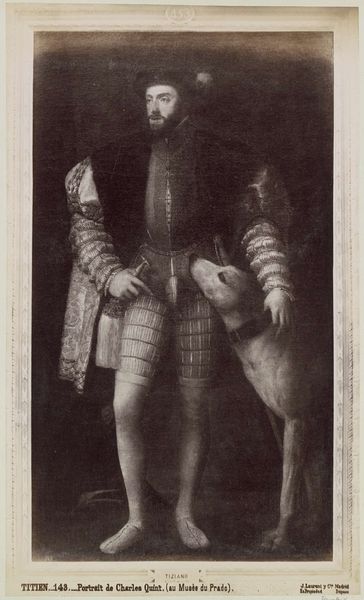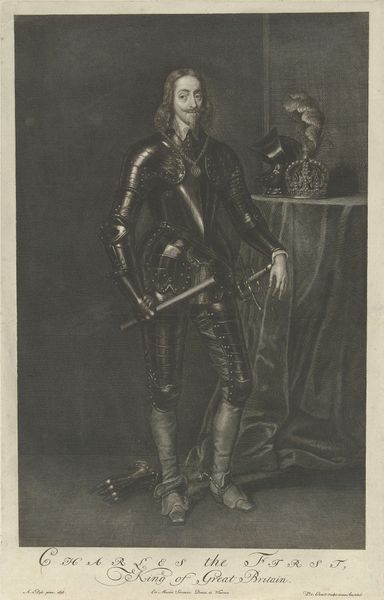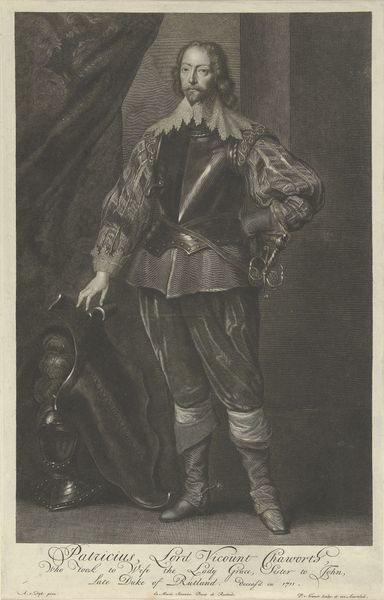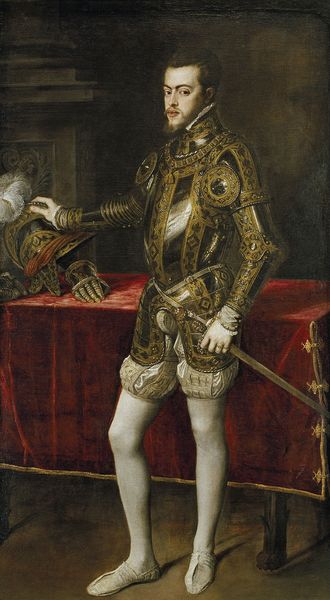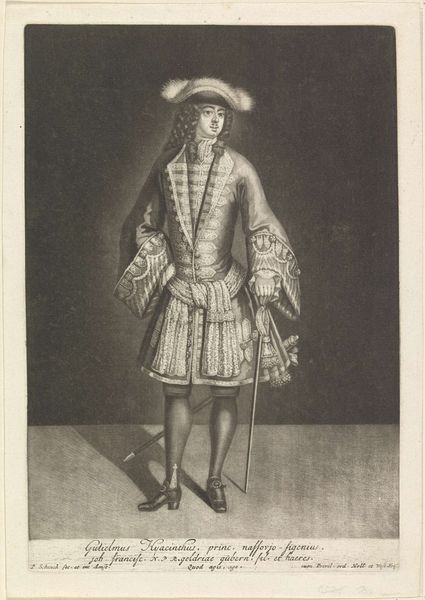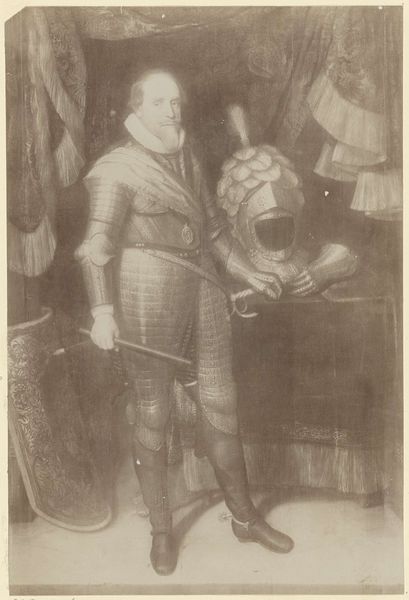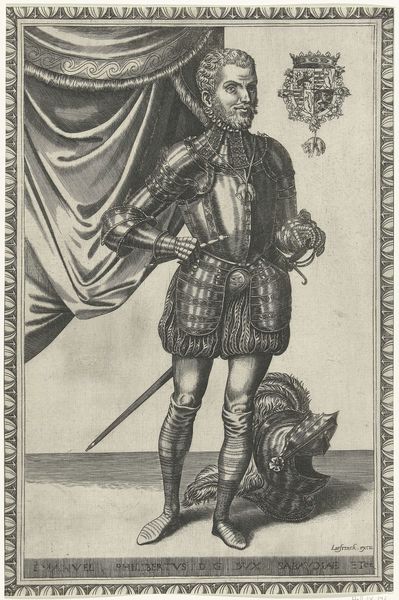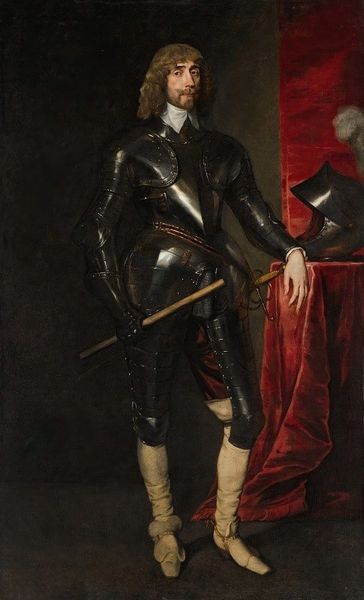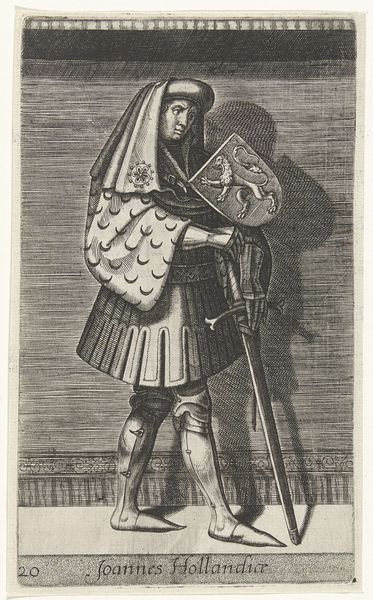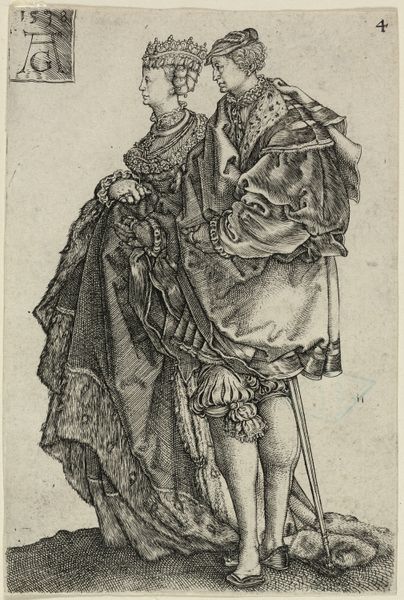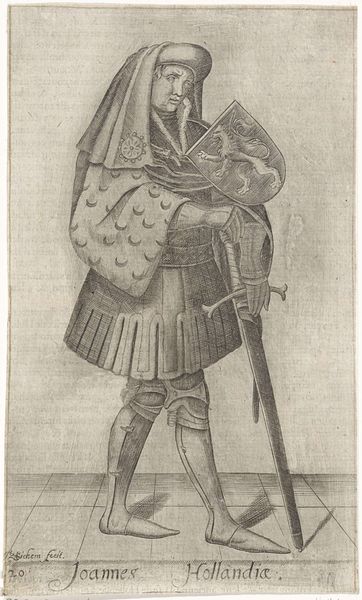
Fotoreproductie van een schilderij door Titiaan, voorstellend een portret van koning Filips II van Spanje c. 1857 - 1880
0:00
0:00
print, photography, gelatin-silver-print
#
portrait
# print
#
photography
#
gelatin-silver-print
#
19th century
#
portrait drawing
Dimensions: height 380 mm, width 231 mm
Copyright: Rijks Museum: Open Domain
Curator: Here we have a gelatin-silver print dating from circa 1857 to 1880, a photographic reproduction by Juan Laurent of Titian's portrait of King Philip II of Spain. Editor: It has a stark quality, doesn't it? The limited tonal range lends a gravity to the subject, focusing attention on the detailed armor and Philip's expression. Curator: The photograph, taken decades after Philip's reign, inevitably positions him in relation to the political and social turbulence that defined 19th-century Europe. Reproducing Titian’s portrait implicates discussions around power, representation, and even Spanish identity, right? Editor: Indeed. Laurent’s photographic treatment introduces another layer. Notice the almost palpable texture achieved through the gelatin-silver process; it both replicates and transforms the oil paint of the original. There’s a fascinating interplay between the media. Curator: Absolutely, this reproduction enters a broader discourse about colonialism, aristocracy, and how portraiture was historically used to project power— often excluding those outside its circle. Editor: Yes, consider the composition itself: the rigid posture, the cool gaze. They establish a hierarchy that feels very self-conscious, almost artificial. The armor acts as a symbol but also a constraint. Curator: The fact that this is a reproduction further complicates notions of authenticity and authorship. It questions the role of the artwork as a historical record. Does it reaffirm or subvert Philip’s image? Does it celebrate Spanish legacy or prompt critical re-evaluation? Editor: Well, that sharp, photographic focus combined with a certain flatness brings to light details potentially missed in the original painting; even the textural elements on his armor and dress really stand out. The distribution of light, as well. Curator: In many ways, it is less about aesthetic experience than a cultural examination of a historical image through a critical contemporary lens. Editor: I concur. Analyzing this print as a translation rather than simply a copy adds dimensions to our understanding of the piece and Titian’s original. Curator: It reminds us that art is never politically neutral, particularly portraiture in royal contexts. Editor: It’s an arresting synthesis. This reproduction is fascinating and speaks volumes on various levels.
Comments
No comments
Be the first to comment and join the conversation on the ultimate creative platform.
